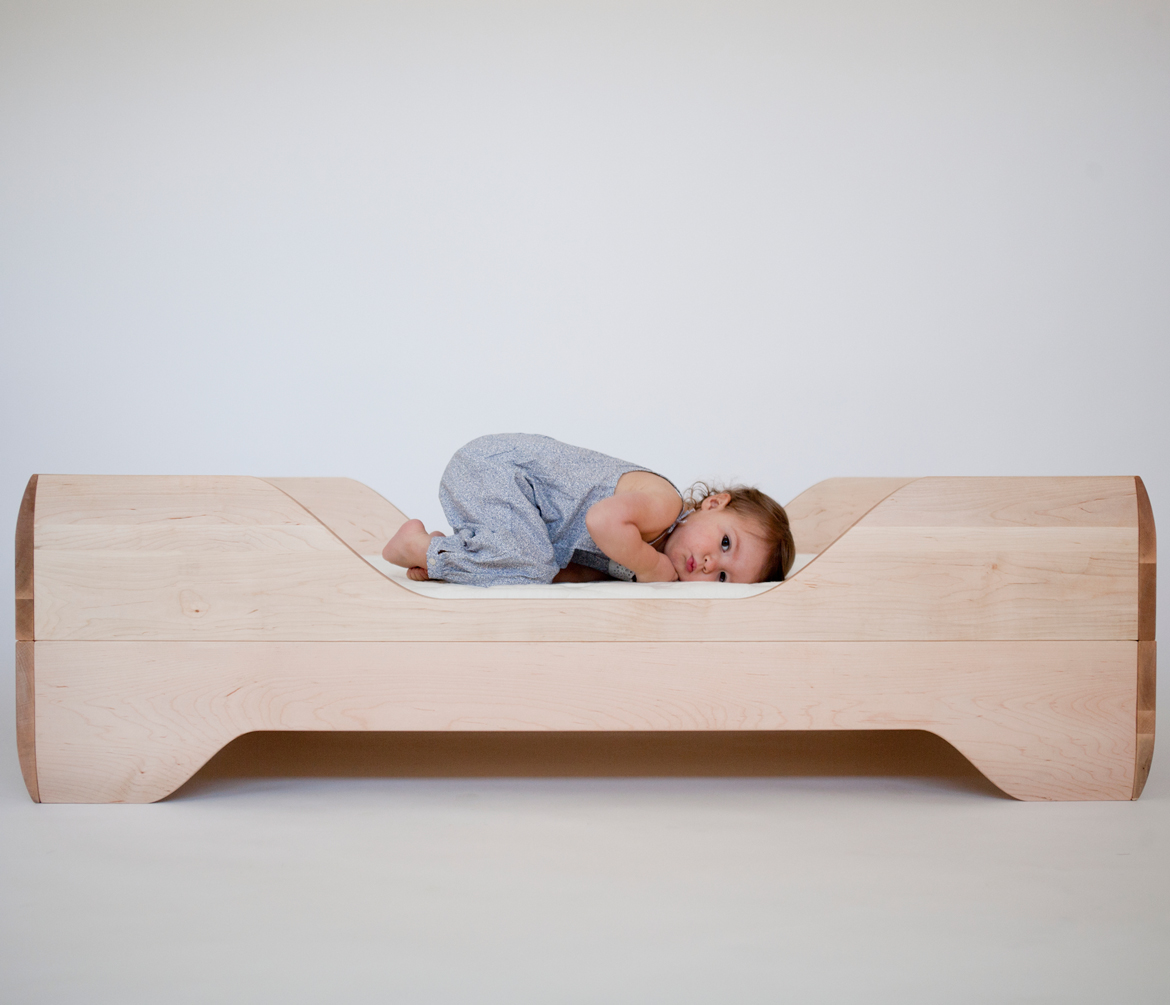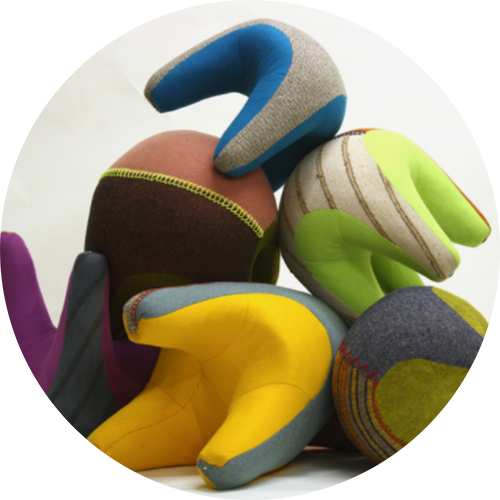002. MATERIALITY
PAINT & Finishes
Written by Frances Vigna
With the ever-expanding globalization of the manufacturing industry and growing inventiveness in product design, it would seem that technology would constantly improve the safety standards for affordable toys and objects for children. The reality, unfortunately, is that even with tight restrictions on the allowable levels of lead and other toxins in paints and finishes since the mid-1970s, startlingly high rates of poisoning still occur in the United States and around the globe today. With this fact in mind, manufacturers of products children come in contact with daily—from nursery and classroom walls to cribs and toys—are reformulating their construction materials. At the same time, in consideration of the lack of oversight in the global toy and furniture market, parents are taking matters into their own hands, researching nontoxic materials, and often looking Stateside for products that are safer for their children and for the environment.
Lead white, prized for its even, opaque coverage and malleability, has been produced since early Greek-era painting. Lead carbonate neutralizes the oils in paint compounds, making lead-based paints highly durable, with a finish that easily withstands washing and is resistant to cracking. The patterned paper and paste that were once popularly used as wall coverings in children’s rooms and nurseries lost favor in the late nineteenth century because of fear that they were unsanitary, and were replaced with lead paint at the turn of the century. A dearth of research on the effects of lead on children’s health accounts for the widespread use of lead-based paints in twentieth-century products designed for children. Lead poisoning was generally considered a health risk for adults, and it wasn’t until the first decade of the last century that reports of lead’s hazardous effects on the health of children became available to the public. In 1914, the death of a toddler who ingested paint that was used to cover his crib was one of the first high-profile cases of lead poisoning in children. Less than ten years later, the League of Nations recommended that lead be banned in the production of interior paints. American federal agencies, for the most part, ignored such proposals. (Propaganda campaigns led by the automotive industry—for which monitoring lead amounts in gasoline would have been financially disastrous—motivated the United States government to turn a blind eye to the chemical’s toxicity to children.)
It wasn’t until the 1970s that researchers studied the long-term deleterious effects of lead on children’s health and neurological development. Manufacturers had replaced lead with zinc oxide and titanium in most paints, and companies such as Sherwin-Williams had successfully developed water-based and latex paints for indoor and outdoor applications, but lead paint was difficult to remove safely from older structures and was often disposed of improperly; consequently, it made its way into surrounding soil and water reservoirs. In 1976, Richard Nixon created the Consumer Product Safety Commission, which banned lead paint completely. According to a study published in 2002, levels of lead found in the blood of American children ages one to five were reduced by more than eighty percent from 1976 to 1999, and children in 2002 had IQs that were, on average, nearly five points higher than those of children evaluated in the years immediately preceding the federal bans.
Even with the difficulties of navigating the hazardous materials found in finishes and paints on children’s products, today’s parents are becoming more conscious consumers and putting pressure on industries to produce safer options. Contemporary furniture makers such as Kalon Studios in Los Angeles design sustainable pieces meant to grow with a child and to have the smallest carbon footprint possible. By sourcing local materials, such as hardwoods and organic palm coir, and keeping shipping weight to a minimum, Kalon reduces the harmful effects of its materials not only on children, but on the overall environment. Most of the children’s pieces Johannes Pauwen and Michaele Simmering have designed for Kalon, including the Echo and IoLine nursery collections, are composed of domestic maple or bamboo, with oil and wax finishes. When a paint is applied to small details, it is a nontoxic, water-based lacquer low in volatile compounds. “When you talk about safety, one thing that is often overlooked is chemical neutrality, and this is something that is very important to us. I would call what we do a complete solution,” says Simmering. “We look at the design from every possible aspect and the entire life cycle of the piece. This is something that extends far beyond the nursery, beyond structural integrity and government safety standards. We want to build the safest possible piece in the safest way for the environment, the craftsmen who build the piece, and the families and children who live with it.”
The federal government has made great efforts to reduce the toxicity of materials used in children’s products, but concerns about unregulated toys and reformulated paints remain. While the permissible level of lead in paint is down to 90 parts per million in the United States, other countries such as China and Singapore do not impose such restrictions, and oftentimes lead levels in paints produced in those countries are as high as 600 ppm. And although large toy manufacturers such as Mattel will voluntarily recall toys composed of hazardous materials, there is little to no standardization of unbranded toys or toys sold through third-party websites such as eBay. Current studies are focusing on the health ramifications of water-based paints in spaces for young children. Water-based paints and solvents contain the volatile organic compounds propylene glycol and glycol ethers, also known as PGEs, which are now linked with higher rates of asthma, allergies, and eczema in children.
The leaders in manufacturing healthier products for children are often smaller companies, which have seen a desire in the market for sustainable, eco-friendly materials and designs and are eager to satisfy demands. “The industry is based on outdated standards and an old, rigid manufacturing model—people don’t like to change how they do things, or invest in change,” says Simmering. “A lot of what we do involves introducing our manufacturers to newer, cleaner, and more efficient materials and teaching them how to use them.” Overseas, Plan Toys, in Trang, Thailand, has, since its founding in the early 1980s, thoughtfully managed every detail—from its sourcing of renewable rubberwood and its kiln-drying manufacturing process to its formaldehyde-free glues and organic pigments and natural dyes—to produce the most sustainable and carbon-neutral toys possible. Plan also takes great care to reduce its impact on the surrounding community, by doing such things as burning excess preconsumer wood to power its own buildings and buildings in nearby villages.
In the United States, local woodworking firms are reemerging after decades of factory closures. “The factories have become more sophisticated and sustainable,” Simmering explains, “however, they are far behind when it comes to working with chemically neutral materials and practices.” A rising alternative to water-based paint is old-fashioned milk paint, which is composed of lime and shipped in powder form, explains Dwayne Siever, owner of the Real Milk Paint Company in Hohenwald, Tennessee. Free from neurotoxins and VOCs, milk paint is relatively harmless if ingested, and it is also compostable. And many manufacturers of products for children are forgoing paint completely, relying instead on natural oil finishes that showcase the woods from which their toys and furniture are constructed. Community Playthings in Ulster Park, New York, fashions toys, nursery and children’s furniture, and outdoor play equipment all from natural, locally sourced materials, such as soft maple. The company is not only concerned about finishes and coatings, manufactured woods, and adhesives that release harmful VOCs, says sales manager Eric Nelson, but has also eliminated its use of heavy metals, chemical flame retardants, fluorinated stain-release and antimicrobial treatments, and chemicals in plastics such as BPA, phthalates, styrene, and acrylonitrile.
By controlling production processes and tightly overseeing the supply of each construction material, today’s manufacturers are winning the battle against toxic design for children. “We build on an as-need basis and ship factory direct, which means no storage, no waste, no multiple transportation,” Simmering says. “We use natural materials and avoid polypropylene finishes, and continually push the envelope when it comes to sustainable standards as well as work directly with the scientists in the lab and with the most technologically advanced machinery. We also source our materials (lumber, finishes, etc.) and packaging locally. Our pieces are made in different shops around the country, but the raw materials used in their production are all sourced from suppliers and forests local to each shop.” Additionally, parents are taking greater initiative in researching the harm children’s toys and furniture may cause. While poisonous materials, such as lead-based paint, are still prevalent in child design, smaller companies are pushing the industry to manufacture safer products. Whether by looking to the past for traditional paint recipes or by using innovative construction and shipping techniques, small-scale manufacturers and design studios are producing low-waste alternative designs that are safer both for the environment and for children.














